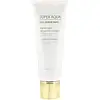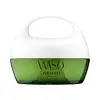What's inside
What's inside
 Key Ingredients
Key Ingredients

 Benefits
Benefits

 Concerns
Concerns

 Ingredients Side-by-side
Ingredients Side-by-side

Chamaecyparis Obtusa Water
MaskingSnail Secretion Filtrate
Skin ConditioningGlycerin
HumectantButylene Glycol
HumectantCaprylic/Capric Triglyceride
MaskingBehenyl Alcohol
EmollientAdansonia Digitata Seed Extract
Skin ConditioningCetearyl Alcohol
EmollientSucrose Polystearate
EmollientSodium Polyacrylate
AbsorbentCaprylyl Glycol
EmollientEthylhexylglycerin
Skin ConditioningSorbitol
HumectantHydrogenated Polyisobutene
EmollientParfum
MaskingHydroxypropyl Cyclodextrin
MaskingTocopheryl Acetate
AntioxidantDisodium EDTA
Centella Asiatica Meristem Cell Culture
AntioxidantXanthan Gum
EmulsifyingChamaecyparis Obtusa Water, Snail Secretion Filtrate, Glycerin, Butylene Glycol, Caprylic/Capric Triglyceride, Behenyl Alcohol, Adansonia Digitata Seed Extract, Cetearyl Alcohol, Sucrose Polystearate, Sodium Polyacrylate, Caprylyl Glycol, Ethylhexylglycerin, Sorbitol, Hydrogenated Polyisobutene, Parfum, Hydroxypropyl Cyclodextrin, Tocopheryl Acetate, Disodium EDTA, Centella Asiatica Meristem Cell Culture, Xanthan Gum
Water
Skin ConditioningDipropylene Glycol
HumectantGlycerin
HumectantAlcohol
AntimicrobialPentaerythrityl Tetraethylhexanoate
EmollientMaltitol
HumectantDimethicone
EmollientTrehalose
HumectantEuphorbia Cerifera Wax
Phenoxyethanol
PreservativePEG-240/Hdi Copolymer Bis-Decyltetradeceth-20 Ether
StabilisingCarbomer
Emulsion StabilisingParfum
MaskingPotassium Hydroxide
BufferingSaccharide Isomerate
HumectantTalc
AbrasiveDipotassium Glycyrrhizate
HumectantDextrin Palmitate
EmulsifyingSodium Metaphosphate
BufferingButylene Glycol
HumectantDisodium EDTA
Acrylates/C10-30 Alkyl Acrylate Crosspolymer
Emulsion StabilisingCarthamus Tinctorius Seed Oil
MaskingSerine
MaskingButylphenyl Methylpropional
PerfumingLimonene
PerfumingHexyl Cinnamal
PerfumingLinalool
PerfumingBenzyl Benzoate
AntimicrobialCalcium Stearate
Cosmetic ColorantCI 77492
Cosmetic ColorantCitric Acid
BufferingSodium Citrate
BufferingCitronellol
PerfumingPaeonia Suffruticosa Root Extract
Skin ProtectingGeraniol
PerfumingDaucus Carota Sativa Root Protoplasts
EmollientCitrus Junos Seed Extract
AntioxidantPEG-30 Phytosterol
EmulsifyingHydrogenated Lecithin
EmulsifyingTriisostearin
Skin ConditioningPanax Ginseng Root Extract
EmollientBHT
AntioxidantTrimethylolpropane Triethylhexanoate
EmollientPlankton Extract
Skin ConditioningSodium Phosphate
BufferingTrisodium EDTA
Polysilicone-2
Tocopherol
AntioxidantWater, Dipropylene Glycol, Glycerin, Alcohol, Pentaerythrityl Tetraethylhexanoate, Maltitol, Dimethicone, Trehalose, Euphorbia Cerifera Wax, Phenoxyethanol, PEG-240/Hdi Copolymer Bis-Decyltetradeceth-20 Ether, Carbomer, Parfum, Potassium Hydroxide, Saccharide Isomerate, Talc, Dipotassium Glycyrrhizate, Dextrin Palmitate, Sodium Metaphosphate, Butylene Glycol, Disodium EDTA, Acrylates/C10-30 Alkyl Acrylate Crosspolymer, Carthamus Tinctorius Seed Oil, Serine, Butylphenyl Methylpropional, Limonene, Hexyl Cinnamal, Linalool, Benzyl Benzoate, Calcium Stearate, CI 77492, Citric Acid, Sodium Citrate, Citronellol, Paeonia Suffruticosa Root Extract, Geraniol, Daucus Carota Sativa Root Protoplasts, Citrus Junos Seed Extract, PEG-30 Phytosterol, Hydrogenated Lecithin, Triisostearin, Panax Ginseng Root Extract, BHT, Trimethylolpropane Triethylhexanoate, Plankton Extract, Sodium Phosphate, Trisodium EDTA, Polysilicone-2, Tocopherol
 Reviews
Reviews

Ingredients Explained
These ingredients are found in both products.
Ingredients higher up in an ingredient list are typically present in a larger amount.
Butylene Glycol (or BG) is used within cosmetic products for a few different reasons:
Overall, Butylene Glycol is a safe and well-rounded ingredient that works well with other ingredients.
Though this ingredient works well with most skin types, some people with sensitive skin may experience a reaction such as allergic rashes, closed comedones, or itchiness.
Learn more about Butylene GlycolDisodium EDTA plays a role in making products more stable by aiding other preservatives.
It is a chelating agent, meaning it neutralizes metal ions that may be found in a product.
Disodium EDTA is a salt of edetic acid and is found to be safe in cosmetic ingredients.
Learn more about Disodium EDTAGlycerin is already naturally found in your skin. It helps moisturize and protect your skin.
A study from 2016 found glycerin to be more effective as a humectant than AHAs and hyaluronic acid.
As a humectant, it helps the skin stay hydrated by pulling moisture to your skin. The low molecular weight of glycerin allows it to pull moisture into the deeper layers of your skin.
Hydrated skin improves your skin barrier; Your skin barrier helps protect against irritants and bacteria.
Glycerin has also been found to have antimicrobial and antiviral properties. Due to these properties, glycerin is often used in wound and burn treatments.
In cosmetics, glycerin is usually derived from plants such as soybean or palm. However, it can also be sourced from animals, such as tallow or animal fat.
This ingredient is organic, colorless, odorless, and non-toxic.
Glycerin is the name for this ingredient in American English. British English uses Glycerol/Glycerine.
Learn more about GlycerinParfum is a catch-all term for an ingredient or more that is used to give a scent to products.
Also called "fragrance", this ingredient can be a blend of hundreds of chemicals or plant oils. This means every product with "fragrance" or "parfum" in the ingredients list is a different mixture.
For instance, Habanolide is a proprietary trade name for a specific aroma chemical. When used as a fragrance ingredient in cosmetics, most aroma chemicals fall under the broad labeling category of “FRAGRANCE” or “PARFUM” according to EU and US regulations.
The term 'parfum' or 'fragrance' is not regulated in many countries. In many cases, it is up to the brand to define this term.
For instance, many brands choose to label themselves as "fragrance-free" because they are not using synthetic fragrances. However, their products may still contain ingredients such as essential oils that are considered a fragrance by INCI standards.
One example is Calendula flower extract. Calendula is an essential oil that still imparts a scent or 'fragrance'.
Depending on the blend, the ingredients in the mixture can cause allergies and sensitivities on the skin. Some ingredients that are known EU allergens include linalool and citronellol.
Parfum can also be used to mask or cover an unpleasant scent.
The bottom line is: not all fragrances/parfum/ingredients are created equally. If you are worried about fragrances, we recommend taking a closer look at an ingredient. And of course, we always recommend speaking with a professional.
Learn more about Parfum